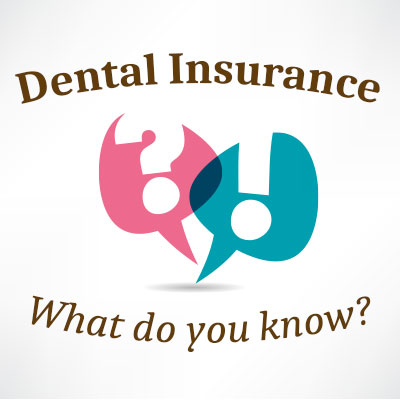Dental Insurance FAQ: The Basics
Posted on July 27th, 2019
 At Veranda Dentistry, we understand that dental insurance can be a tricky thing to navigate. Evaluating dental plans and considering deductibles, benefits, which treatments are covered, and the mountain of other information insurance companies provide can be a headache in and of itself. Dr. Chad Johnson want every patient to have the power to control their own health, so here’s a simplified guide to the basics of dental health insurance.
At Veranda Dentistry, we understand that dental insurance can be a tricky thing to navigate. Evaluating dental plans and considering deductibles, benefits, which treatments are covered, and the mountain of other information insurance companies provide can be a headache in and of itself. Dr. Chad Johnson want every patient to have the power to control their own health, so here’s a simplified guide to the basics of dental health insurance.
Dental Insurance
Dental insurance is an excellent investment that helps people ensure a lifetime of healthy smiles. However, in order to get the best value from your dental insurance, there are a few things you need to know. Here are the answers to the most common questions we hear at Veranda Dentistry.
What is Dental Insurance?
Having dental insurance means that an insurance provider will pay for a percentage of the dental care that you need every year. Plans vary in terms of how much they cost, how much they cover, and which dentists are included. If you would like to know if your Pleasant Hill dentists are included in your provider network, please contact us today.
What Do Dental Insurance Plans Cover?
Insurance carriers cover dental procedures in three fundamental categories: preventive (examinations, routine cleanings, x-rays, etc.); basic/restorative (cavity fillings, tooth extractions, etc.); and major (crowns, bridges, surgical extractions, dental implants, etc.).
The classification of procedures into categories varies according to each insurance provider, but most dental insurance plans have “100-80-50” coverage, which means routine cleanings, checkups, and diagnostic care are paid for in full; 80 percent of the cost of fillings, root canals, and other basic procedures are covered; and 50 percent of the cost of dental implants and other major procedures are covered. Cosmetic dental procedures, such as whitening treatments, are not usually covered.
Premiums, Copays, Deductibles & Maximums
- Premiums – These are the basic yearly or monthly cost of your dental insurance. Premiums do not include copayments or deductibles.
- Copayments – Per visit payments of a flat rate or a percentage of the total appointment cost.
- Deductibles – For each plan, there is an annual amount that you must pay before insurance will cover expenses. After your deductible is met, your insurance plan will cover a percentage of the cost of your dental care.
- Plan Maximums – Most plans include a maximum dollar amount that will be paid for your dental expenses. You are financially responsible for any amount exceeding your plan maximum.
When Do Benefits Renew?
Benefits are usually calculated yearly and renew on the 1st of January. It is important to know that unused coverage does not carry over to the next year.
If you have specific questions about your dental insurance, you can contact your insurance provider directly or contact Veranda Dentistry today! We are always happy to answer any questions that help keep Des Moines smiles beautiful and healthy.
The content on this blog is not intended to be a substitute for professional medical advice, diagnosis, or treatment. Always seek the advice of qualified health providers with questions you may have regarding medical conditions.


